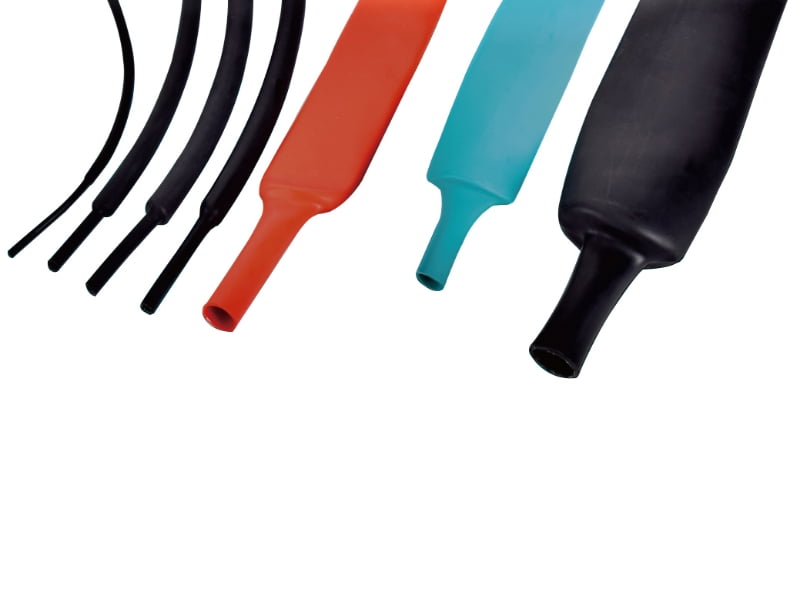Introduction
Dual Wall Heat Shrink Tube, also known as adhesive-lined Heat Shrink Tubing, is a specialized type of tubing designed to provide superior insulation, mechanical protection, and environmental sealing. It consists of an outer layer of polyolefin or other thermoplastic materials and an inner layer of hot-melt adhesive. When heated, the tubing shrinks radially to form a tight seal around the substrate, while the adhesive melts to create a waterproof and corrosion-resistant barrier.

Key Features with Technical Data
1. Dual-Layer Construction
The outer layer typically has a shrink ratio of 2:1, 3:1, or 4:1, allowing it to conform to irregular shapes. The inner adhesive layer has a thickness ranging from 0.1mm to 0.5mm, ensuring a robust seal.
2. Temperature Resistance
Dual wall tubes can withstand continuous operating temperatures from -55°C to 135°C, with some high-temperature variants rated up to 150°C.
3. Dielectric Strength
The dielectric strength exceeds 20 kV/mm, making it ideal for high-voltage applications.
4. Flame Retardancy
Many variants meet UL 224 VW-1 or IEC 60754-1 standards, with a flame spread rate of less than 100 mm/min.
5. Chemical Resistance
Resistant to oils, acids, and solvents, with a weight change of less than 5% after 168 hours of immersion in chemical solutions per ASTM D543.
Applications
1. Aerospace and Defense
Used for wire bundling and protection in avionics, where MIL-DTL-23053/4 standards are often required.
2. Automotive
Protects wiring harnesses from abrasion and moisture, with SAE-AMS-DTL-23053 compliance for under-hood applications.
3. Marine
Prevents saltwater corrosion on shipboard electrical systems, with UV resistance exceeding 1000 hours per ASTM G154.
4. Industrial Machinery
Shields cables in robotic arms and CNC machines, with abrasion resistance exceeding 500 cycles per ASTM D4060.
5. Renewable Energy
Seals connections in solar panel arrays and wind turbines, with tracking resistance >600V per IEC 60587.
Installation and Maintenance
Installation Procedure
Select the correct size: Pre-shrink inner diameter should be 20-30% larger than the substrate diameter
Clean the surface: Remove contaminants with isopropyl alcohol (≥99% purity)
Apply heat evenly: Use a heat gun at 120-180°C with 15-30 cm distance
Verify complete shrinkage: Ensure adhesive flows uniformly from both ends
Maintenance Guidelines
Annual inspections: Check for cracks or adhesive separation using 10x magnification
Cleaning: Use only pH-neutral cleaners (6-8 pH range)
Replacement criteria: Replace if elongation at break decreases by >30% per ASTM D638
Storage conditions: Keep in 20-25°C, <60% RH environments away from UV light
Technical Comparison Table
| Property | Standard Grade | Military Grade | High-Temp Grade |
|---|---|---|---|
| Shrink Ratio | 2:1 | 3:1 | 2:1 |
| Tensile Strength | ≥14 MPa | ≥17 MPa | ≥16 MPa |
| Adhesive Melt Index | 15 g/10min | 12 g/10min | 18 g/10min |
Safety Considerations
When working with Dual Wall Heat Shrink tubing:
Always work in well-ventilated areas (≥10 ACH) due to potential VOC emissions
Use thermal gloves with ≥200°C resistance
Maintain minimum bend radius of 4x cable diameter to prevent stress cracking
Environmental Compliance
Most dual wall tubes comply with:
RoHS 2011/65/EU (lead, cadmium, mercury < 1000 ppm)
REACH SVHC < 0.1% w/w
Halogen-free options with chlorine/bromine content < 900 ppm




 English
English

